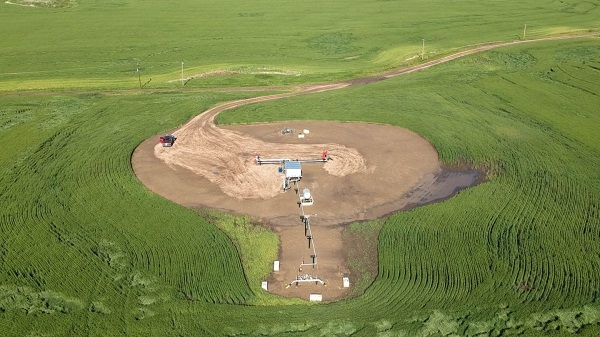Also Interesting
Examining the Safety of Canadian Hockey Players: A Perspective on Mandatory Neck Guards in the League

News of Adam Johnson’s tragic death after an injury during a hockey game in England has sent shock waves through the hockey community worldwide, raising pressing questions about player safety and protective mandates across different leagues.
As a former NHL player who also took to the ice for the Pittsburgh Penguins, Johnson’s incident underlines the potentially life-threatening risks hockey players face. Remarkably, the NHL currently has no rules requiring players to wear protective neck gear, a decision that has come under scrutiny in the wake of Johnson’s death.
Canadian hockey legend and resident physician Hayley Wickenheiser has joined the call for mandated neck protection across all levels of play.
This article delves into the ongoing debate surrounding safety regulations in Canadian hockey leagues, highlighting different perspectives on the implementation of compulsory neck guards for players.
Mandatory Neck Guards in Other Leagues
Unlike the NHL, some leagues have taken proactive measures to ensure player safety by making neck guards mandatory. The Ontario Hockey League (OHL) and Quebec Major Junior Hockey League (QMJHL), for instance, require all players to wear neck protection. This rule extends to minor league players and women’s hockey players registered with Hockey Canada.
Even outside of Canada, the English Ice Hockey Association (EIHA) has upped its safety recommendations in the aftermath of Johnson’s death. Initially, the association strongly suggested that all players wear approved neck guards for the remainder of the year. However, this recommendation is set to become a requirement after December 31, 2023.
Experts and Influential Figures Weigh In
Prominent figures in the hockey world have increasingly voiced their concerns and opinions on this critical issue. Winnipeg Jets interim head coach Scott Arniel, who witnessed his teammate Clint Malarchuk’s neck injury in 1989, anticipates that the NHL will deliberate on modifying regulations regarding neck guards.
Meanwhile, Tim MacMillan, head coach of the Strait Pirates Junior B team in Nova Scotia, emphasizes the importance of consulting a wide range of stakeholders in deciding on the implementation of neck protection mandates in the league.
Hayley Wickenheiser, a respected figure in Canadian hockey, advocates for uniform neck guard regulations across all levels of play. She asserts that the necessity of protective measures transcends the professional leagues, extending to junior and amateur players as well. The collective voice of these influential figures is pivotal in bringing about change and fostering a safer environment for players within the rink.
Response from the English Ice Hockey Association (EIHA)
The English Ice Hockey Association (EIHA) responded promptly to Johnson’s death, issuing a statement that expressed their concern and commitment to player safety. They declared, “It is unacceptable for any player to lose their life while playing sport. Our responsibility is not only to avert the recurrence of such a heart-breaking accident but also to pre-emptively address other foreseeable incidents.”
To this end, the EIHA has announced a strong recommendation for all players to wear an approved neck guard for the rest of the year. After December 31, 2023, this recommendation will become a mandate, demonstrating the association’s dedication to enhancing player safety and setting a precedent for other leagues to follow.
Final Thoughts
The death of Adam Johnson has brought to light the critical issue of player safety in hockey, particularly the need for mandatory neck guards. While some leagues have already taken steps to make these protective measures compulsory, more needs to be done across all levels of play. The influential voices and actions of experts and leaders in the hockey community will hopefully continue to push for progress toward a safer playing environment for all hockey players.
In the meantime, both players and fans alike are left to contemplate the FanDuel NHL odds and other statistics, knowing that injury risk remains a constant factor. The hockey community needs to continue pushing for improved safety measures to protect players at all levels and maintain the integrity of the game we all love.
Also Interesting
Endorphina Slots: High-Quality Games Now at Zoome Casino Canada

If you’re looking for a provider that blends striking visuals, solid math models, and engaging themes, Endorphina slots are a must-try. Now featured at Zoome casino, Endorphina is quickly becoming a favourite among Canadian players who enjoy well-balanced volatility and great return potential.
From classic fruit machines to themed adventures with expanding wilds, Endorphina in casino environments offers reliable entertainment and serious payout opportunities. But what makes these games stand out? Let’s break down the key features, winning potential, and why you should play Endorphina games at Zoome.
Who Is Endorphina?
Endorphina is a leading game provider based in Prague, with over a decade of experience in developing online slots for regulated markets. The company is known for its well-polished video slots that balance engaging storylines with player-friendly mechanics. Their catalogue includes over 100 titles, with new releases launched regularly.
In Canada, Endorphina slots are now widely accessible through Zoome casino, one of the country’s fastest-growing platforms with a large game library and crypto-friendly payments.
Popular Endorphina Slots You Can Try at Zoome
Once you complete your zoome casino login, head over to the Endorphina slots section to discover a curated list of titles. Here are some fan favourites:
1. Hell Hot 100
● RTP (Return to Player): 96.07%
● Volatility: Medium
● Max Win: 1,000x
● Type: Classic fruit slot with a hot twist
● Why Play: Simple gameplay, blazing fast spins, and high hit frequency
2. Chance Machine 100
● RTP: 96.00%
● Volatility: Low to Medium
● Max Win: 5,000x
● Features: Expanding wilds, stacked symbols
● Why Play: Perfect for casual players who want frequent wins
3. Book of Santa
● RTP: 96.00%
● Volatility: High
● Max Win: 5,500x
● Features: Free spins with expanding symbols
● Why Play: A seasonal slot that pays like a timeless classic
4. Tribe
● RTP: 96.00%
● Volatility: Medium to High
● Max Win: 3,000x
● Special Feature: Free spins with progressive multipliers
● Why Play: Visually beautiful with strong payout structure
All endorphina games are built with HTML5, ensuring smooth play on desktop and mobile without requiring downloads.
Are There Endorphina Free Slots?
Yes! Endorphina free slots are available for demo play directly on Zoome. This means Canadian players can try out their favourites before making a real-money commitment. Free versions include all the same features, visuals, and mechanics — great for getting familiar with a game’s volatility and bonus structure.
To access, simply log in or click the “Demo” button on any title from the Endorphina section on Zoome.
Zoome Casino Bonuses and Endorphina Integration
Zoome casino offers several bonuses that can be used specifically on Endorphina slots, including:
● Welcome bonuses with free spins on selected Endorphina titles
● Reload bonuses for returning players
● Cashbacks and weekend tournaments featuring endorphina slot themes
● Seasonal campaigns with exclusive zoome casino promo codes
New players should check for a potential zoome no deposit bonus, as it occasionally applies to Endorphina’s most popular games like Book of Santa or Hell Hot 100.
RTP, Win Rate & Performance Metrics
Endorphina designs its games with a balance of fairness and entertainment. Here’s a general breakdown:
Metric Range/Typical Value
RTP 96.00% – 96.07%
Average Hit Frequency ~1 in 4 spins
Max Exposure (Base Game) 1,000x to 5,500x
Bonus Trigger Frequency 1 in 120–150 spins (approx.)
Average Session Duration 15–25 mins (based on volatility)
These stats make Endorphina in casino environments appealing to both casual players and slot grinders who understand variance and bankroll management.
Play Anywhere, Anytime
Zoome supports mobile-first gameplay. Every endorphina slot loads seamlessly on iOS and Android without needing an app. With fast servers, secure encryption, and a clean layout, spinning is quick, intuitive, and glitch-free.
Whether you’re chasing a bonus round or enjoying a few free spins on your lunch break, Zoome makes the experience smooth and hassle-free.
Final Thoughts
With its mix of quality graphics, strong RTP, and easy bonus access, Endorphina slots are a solid choice for Canadian players. Whether you’re trying endorphina free slots in demo mode or diving into real-money play via zoome casino login, there’s a title to suit your style.
From well-known hits like Hell Hot 100 to sleeper favourites like Tribe, this provider continues to prove why Endorphina in casino settings is a winning combination. And with regular zoome casino promo code campaigns and potential zoome no deposit bonus access, it’s the perfect time to start spinning.
Ready to explore the full lineup? Visit Zoome and see what Endorphina has to offer — your next big win could be one spin away.
Also Interesting
Tips to build an income stream through betting

Financial freedom means different things to different people. Some seek to clear debt or reduce working hours. Others aim to build an income stream separate from traditional employment. Betting is often seen as entertainment, but some treat it as a potential method for financial gain.
It is not a simple route. Success in betting depends on skill, patience, and clear risk control. Casual bets and chasing losses are not the same as long-term planning. Play slots and live casino online deals may attract interest, but true gains require a well-developed approach grounded in calculation,
not luck.
Some treat betting as a serious income project. Like investing, it involves monitoring markets, sticking to rules, and managing emotion. These habits shape outcomes more than any single win or loss.
The Role of Strategy and Market Choice
Building consistent returns from betting starts with discipline. Most success stories come from people who specialize in specific markets. They avoid randomness and focus on repeatable patterns. This reduces risk and allows room for structured decisions.
For some, sports betting offers the best value. Others prefer slots, roulette, or blackjack. Success in each area depends on the ability to control the betting environment. Choosing fixed budgets, setting limits, and logging results all contribute to a more sustainable system.
In Ireland and the UK, platforms now offer a wider range of services. These include analytics tools, stat-based bets, and account dashboards. Markets like Slots and table games in Ireland are especially popular among users who combine short sessions with targeted goals.
Key traits of long-term betting approaches include:
● Specialising in specific games or sports.
● Avoiding emotional or rushed bets.
● Logging every session and reviewing performance.
● Staking only a fixed portion of the bankroll per event.
Psychological Factors and Risk Limits
Financial growth through betting requires mental control. Most losses in gambling happen when people act without a plan. Emotional decisions, such as doubling stakes after a loss, often lead to poor outcomes.
Structured bettors approach the activity with neutral judgement. They view each bet as part of a larger system, not an isolated moment. This approach reduces stress and protects capital. Understanding the limits of control also helps. For example, not every market behaves the same
way each week.
Many betting platforms now offer tools that assist with self-monitoring. These include loss caps, spending summaries, and trend reports. These systems support the user but cannot replace careful thinking. Understanding the connection between strategy risk and decision making can lead to
better choices, both short and long-term.
Economic Context and the Role of Discipline
The idea of using betting as a route to financial freedom often attracts attention during economic stress. Some people look for faster income options when prices rise or wages stagnate. However, betting is not a guaranteed path. It only works when treated as a skill-based discipline, not a
shortcut.
Those who see results often treat betting like a second job. They put in regular hours for research, review performance metrics, and stick to a strict process. This removes guesswork and replaces it with control.
Having multiple sources of income is one part of building financial freedom. Betting can be one of those if it is paired with discipline, patience, and analysis. It is not passive income. It requires consistent effort and awareness.
Sensible Goals and Sustainable Progress
Success with betting should not be measured in jackpots or sudden windfalls. Small, repeatable profits are more stable. The aim is to grow a bankroll slowly, avoid major losses, and learn from every result. This mindset supports steady progress and avoids burnout.
Financial freedom through betting is possible for some. However, it depends on the user, not the platform. Planning, structure, and clear risk boundaries matter more than the type of bet. For those who view betting as a long-term activity rather than a quick fix, it can play a role in building
independence.
As always, betting should be treated with care and clear intent. When combined with focus and habit, it can support a wider plan toward financial freedom. However, without those foundations, it is more likely to create setbacks than solutions.
-

 Alberta10 hours ago
Alberta10 hours agoAlberta Independence Seekers Take First Step: Citizen Initiative Application Approved, Notice of Initiative Petition Issued
-

 Crime9 hours ago
Crime9 hours agoNational Health Care Fraud Takedown Results in 324 Defendants Charged in Connection with Over $14.6 Billion in Alleged Fraud
-

 Health8 hours ago
Health8 hours agoRFK Jr. Unloads Disturbing Vaccine Secrets on Tucker—And Surprises Everyone on Trump
-

 Bruce Dowbiggin11 hours ago
Bruce Dowbiggin11 hours agoThe Game That Let Canadians Forgive The Liberals — Again
-

 Alberta1 day ago
Alberta1 day agoCOVID mandates protester in Canada released on bail after over 2 years in jail
-

 Crime2 days ago
Crime2 days agoProject Sleeping Giant: Inside the Chinese Mercantile Machine Linking Beijing’s Underground Banks and the Sinaloa Cartel
-

 Alberta2 days ago
Alberta2 days agoAlberta uncorks new rules for liquor and cannabis
-

 Business1 day ago
Business1 day agoCanada’s loyalty to globalism is bleeding our economy dry






